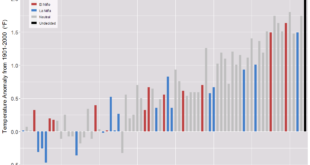 Our World in Data has an interactive graph of women’s educational attainment vs fertility, by country and colored by region, from 1950-2010. The correlation between the average years of education for women and the countries fertility rate is clear. A world bank article, Female Education and Childbearing: A Closer Look at the Data, from 2015 provides evidence that the relationship is causal.
Our World in Data has an interactive graph of women’s educational attainment vs fertility, by country and colored by region, from 1950-2010. The correlation between the average years of education for women and the countries fertility rate is clear. A world bank article, Female Education and Childbearing: A Closer Look at the Data, from 2015 provides evidence that the relationship is causal.
Why does female education have a direct effect on fertility? The economic theory of fertility suggests an incentive effect: more educated women have higher opportunity costs of bearing children in terms of lost income. The household bargaining model suggests that more educated women are better able to support themselves and have more bargaining power, including on family size.
According to the ideation theory, more educated women may learn different ideas of desired family size through school, community, and exposure to global communication networks. Finally, more educated women know more about prenatal care and child health, and hence might have lower fertility because of greater confidence that their children will survive.
Of course, education isn’t the only factor contributing to fertility rates. Data is provided by Our World in Data, along with the graph. The data can be used for tests of correlation, regression, and one can compare by county and region for specific years.
